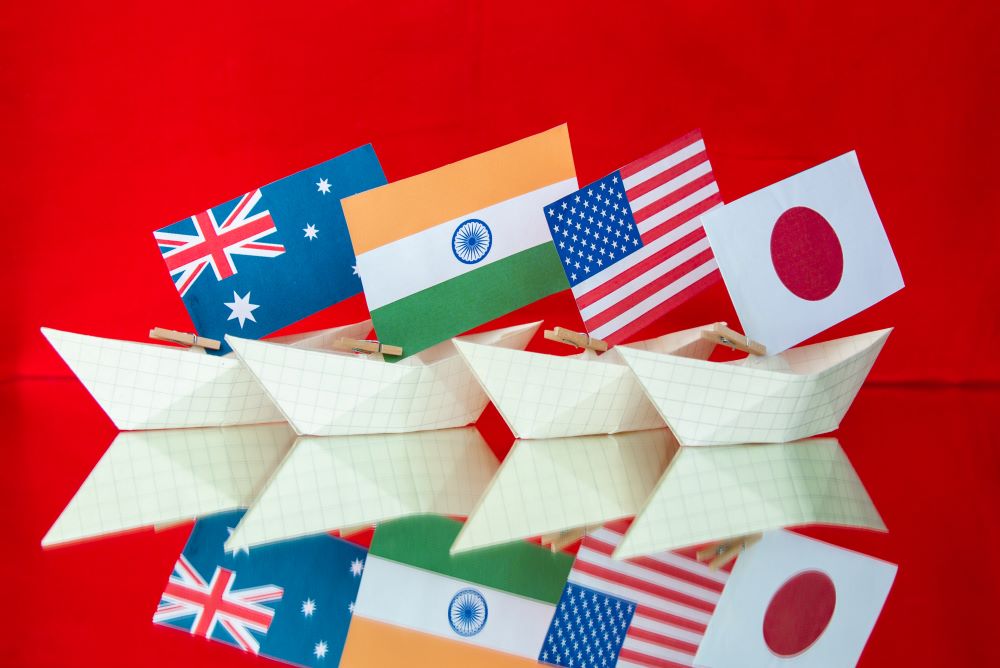What do India—with 1.4 billion people and $2.6 trillion in GDP—and Brunei—a tiny nation on the north coast of Borneo, Malaysia, with less than 500,000 people and $12 billion GDP—have in common? A significant trade in oil and gas, which flows from Brunei to India; medical and entrepreneurial talent, which tends to flow in the other direction; and recently, membership in the U.S.-sponsored Indo-Pacific Economic Framework for Prosperity (IPEF). Other member nations include Australia, Indonesia, Japan, Korea, Malaysia, New Zealand, the Philippines, Singapore, Thailand, Vietnam and of course the United States.
The IPEF is not a free trade agreement, so it doesn’t lower tariffs, liberalize trade in services, protect IP or take other measures to improve members’ access to their partner countries’ markets. Those and other goals would have been accomplished by the Trans-Pacific Partnership (TPP), which included many of the same partners. After years of negotiation, the TPP was signed by the President Obama in 2015—but never ratified (or rejected) by Congress. After President Trump scuttled it, the TPP was renegotiated by the remaining partners and ratified as the Comprehensive and Progressive Trans‐Pacific Partnership (CPTPP).
The IPEF is also nothing like the RCEP, the Regional Comprehensive Economic Partnership, which in November 2020 joined China, Japan, Australia, Korea, New Zealand and the 10 ASEAN nations in a free trade agreement that promises lower tariffs, common rules of origin and other benefits to countries that represent 30% of world GDP
In fact, in signing this “framework,” the IPEF members agreed only to collaborate on at least one of four “pillars”:
- Improve rules and standards for cross-border flows of data and digital services, including AI ethics, online privacy, and local e-commerce;
- Cooperate to improve supply chain resiliency and transparency, map critical mineral value chains, and diversify supply chains;
- Advance clean energy, energy efficiency, and decarbonization;
- Improve fairness and transparency to reduce corruption, money laundering, and tax evasion.
Many in U.S. trade policy circles criticize the IPEF for not going far enough to counter China’s influence in Asia; and others find it a well-meaning but largely hollow effort to help its less-developed members such as Indonesia—who really need better access to the U.S. market.
Robert D. Atkinson, head of the Information Technology and Innovation Foundation and former presidential advisor, finds both these criticisms off base. He writes in Foreign Policy that the United States’ partners in IPEF impose higher tariffs on U.S. goods that the U.S. imposes on theirs, so the U.S. Congress (which has to approve trade agreements) would have little appetite for reducing tariffs further.
He also argues that the United States no longer has the economic strength to buy the “political cooperation” of developing nations by granting them access to domestic markets. “That would mean fewer good [U.S.] jobs, a weakened [U.S.] defense industrial base, reduced [U.S.] global economic power, and increased foreign dependency.”
He argues that IPEF member nations should take stock of the danger of increasing their trade dependencies on China, which practices trade as “a way to ensure that trade boosts its power” and weakens that of its adversaries. Instead of lower tariffs, IPEF can lead to “cooperation on export controls and technology standards as well as technology development, joint financing of key infrastructure and climate change programs, and shared efforts on cybersecurity and confronting Chinese industrial espionage,” concluded Atkinson.
The Wall Street Journal’s Chief Economics Commentator Greg Ip sounded similar themes in a June 1 column. “The IPEF could nudge key Asian economies into the U.S. sphere of influence in ways older treaties didn’t, by addressing new arenas of competition such as supply-chain resilience, technology standards and export controls.”
The framework could also “encourage closer integration between the U.S. and Asian tech industries by codifying which countries the U.S. considers safe partners for supply chains and joint ventures,” wrote Ip.
Yet Ip agrees with critics who say a TPP-style agreement would be much more effective at “shifting supply chains [from China] to friendlier countries” (which he calls “friendshoring”).
“Unlike the TPP, the IPEF doesn’t really encourage such diversification, because it doesn’t expand access to the U.S. market, a priority of poorer countries” such as Indonesia. Ip doesn’t mention such a free trade agreement would require ratification by Congress—something never accomplished for the TPP.
The IPEF is just one of many geopolitical initiatives in Asia aimed at countering China’s influence. These include Partners in the Blue Pacific (Australia, Japan, New Zealand, U.S. and UK aim to help Pacific Island nations develop economically) and the Quad (security dialogue between the U.S., India, Australia and Japan).
Add to the list: the new U.S.-Taiwan Initiative on 21st-Century Trade, which aims to deepen the bilateral economic and trade relationship, advance mutual trade priorities and promote innovation and economic growth, according to a summary by Sandler, Travis & Rosenberg and reprinted by Hawaii Foreign-Trade Zone’s Trade News Weekly.
Supply chain managers won’t have time to track the evolution and enforcement of these varied initiatives. But knowing what might be over the horizon can help add strategic depth to long-term sourcing decisions in Asia—whether they involve India or Brunei or China or any other Asian nations.





